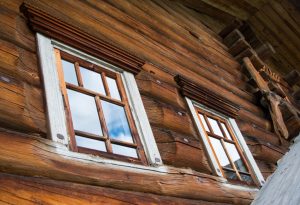As a hired contractor or home buyer, one of the most important skills you can possess is being able to accurately evaluate the condition of a home. A home inspection checklist can help ensure you have all the information necessary to decide whether a property is worth working on or investing in.
Structural Components
Plumbing
A plumbing inspection can help to spot any leaks or other signs of damage. Repairs may be necessary if you notice any odd noises coming from the pipes or difficulty with water pressure or flow. If it is not a newer home, make sure you ask about any updates that may need to be made to bring the system up-to-date with current codes and regulations. Additionally, it is important to check for any signs of corrosion or rust that could indicate a problem.
Sometimes inline pipe inspections are necessary, especially if the home is older. During these inspections, cameras view the inside of pipes and detect any obstructions or other issues that need to be addressed. This can help determine the overall condition of a home’s plumbing system.
Foundation
A home’s foundation should also be inspected for cracks or other evidence of damage. Cracks can occur due to weather conditions such as freezing temperatures, earthquakes, or even normal settling over time. If any significant cracks are noticed, restoration may be necessary, or you should at least take the time to decide on the best way to proceed with them, whether that’s to fix them or to monitor them for any changes. It is especially important to inspect foundations regularly if the home is in an area prone to flooding or seismic activity.
Interior Components
Windows and Door Frames
Window and door frames not only help with insulation from the outside weather but also provide protection from intruders. It’s important to inspect them for any signs of damage, such as cracked or missing glass, torn screens, peeling paint, warped frames, or gaps in the frame.
Additionally, check if they open and close easily without sticking or squeaking. Suppose any issues are found with the windows or door frames during the initial inspection process. In that case, it’s best to repair them immediately before they become bigger problems later on down the road.
Appliances
Inspecting appliances is another part of an effective home inspection process. Check all major appliances like refrigerators, stoves/ovens, dishwashers, washers/dryers, and garbage disposals for any wear and tear. Also, ensure all their parts are working properly. Look for broken knobs or handles on ovens/stoves or faulty seals on refrigerators/freezers, which could lead to energy inefficiency or, worse yet – a fire hazard.
Electrical Outlets
You should also pay attention to electrical outlets when doing an interior home inspection. Inspect all outlets for frayed wires that could put your workers or housemates at risk of an electric shock. Also, check for outdated plugs that may need replacing. If you notice any sparks coming out of sockets when plugging something in, this could indicate a more serious issue beyond what is visible from a surface-level inspection alone.

Exterior Components
Landscaping
Landscaping features are often overlooked, but they can have the greatest impact on the overall safety of a property. Whether it’s trees, shrubs, flower beds, or walkways, each element should be carefully inspected for damage or deterioration. You should also check for areas needing trimming, reseeding, or replanting due to dead foliage or overgrowth. Hardscape features like decks and patios should also be checked for structural issues such as rotting wood or cracked concrete slabs.
Gutters
Gutters may seem like an afterthought when inspecting the exterior components of a home. Still, they can play an important role in protecting the roof and foundation from water damage. Check for signs of corrosion or rust that could lead to leaks and other issues down the line.
If there is any standing water in the gutters, then it’s likely that there is an issue with either the gutters themselves or with the drainage system. This could result in more difficult repairs if not addressed in time.
It’s also important to inspect all downspouts and ensure they are properly connected and draining away from the house foundation. Make sure that no debris has built up in them since this could lead to clogging, resulting in water damage to the home’s foundation.
A comprehensive home inspection checklist is essential to ensure you get accurate information about any potential jobs your contracting company might accept or real estate purchases you might make. By inspecting both structural components like the plumbing and foundation; interior components like window and door frames, appliances, and electrical outlets; and exterior features like landscaping and gutters – you can get a thorough overview of what needs attention. With this knowledge under your belt – you will be more than prepared when it comes time to start the project or make an investment.













